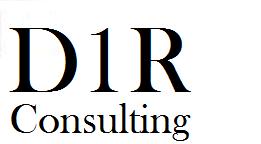Brunello subzones - A good idea?
- Details
- Published: Thursday, 13 November 2014 09:48
- Written by David DeCiero
Over the past few years, there have been rumblings of adding new subzones for Brunello di Montalcino. This new delineation is not without precedent as Barolo recently was awarded 5 subzones starting with the 2010 vintage. However, the solution to the new subzones has not been ratified and obstacles still exist.
Overall, Brunello di Montalcino is a small zone that is approximately 2000 hectares. Compared to Chianti’s total land of 16,693 hectares, it is small. In fact, the entire Brunello di Montalcino zone is located within the Chianti subzone of Colli Senesi. The issue arises in the great variation in altitude and soils found within the relatively small 2000 hectares. Elevations range from 100 m to 700 meters, so grapes grown in different parts will have extremely different qualities. There has also been a large increase in the production of Brunello di Montalcino over the past 20 years. In 1990, there were 3.7 million bottles produced and in 2007 there were 8.9 million bottles. There are year over year variations, but there has been a marked increase over the past 20 years. The majority of that production is coming from lower quality sites, so the overall image of Brunello has been diluted. (Brunellopoli did not help either). One of the ideas to reinstill the image and prestige is to exclude the lower quality sites by creating new subzones within the original zone. Not all of the space will be in the new zones, so there will still be a generic Brunello di Montalcino zone for wines made outside of the subzones or from more than one subzone.
Kerin O’Keefe has proposed seven subzones. These are Montalcino, Bosco, Torrenieri, Tavernelle, Camigliano, Sant’Angelo and Castelnuovo dell’Abate. Montalcino lies to the north and south of the town of Montalcino, Bosco is in the northwest, Torrenieri is in the northeast, Tavernelle is south and west of the town, Camigliano is further southwest, Sant’Angelo is in the deep south of the region, and Castelnuovo dell’Abate is in the far southeast.
Proponents of the planned subzones include vineyard owners to whom the proposal is beneficial and some wine writers. Kerin O’Keefe has been the most outspoken advocate of adding the new subzone classification. In her book, Brunello di Montalcino: Understanding and Appreciating One of Italy's Greatest Wines, as well as numerous articles for Decanter magazine, she describes the additional delineation that she feels Brunello producers and consumers need. Her main argument is that there is too much variation in vineyard sites such that there is no generic Brunello anymore. The subzones she recommends each have distinctive character that can be directly traced to their terroir. Therefore, she argues, adding these delineations will make it clearer for consumers to understand different quality Brunellos from the label, without having to learn each specific vineyard or producer. Some vineyard owners agree with making their distinction as they believe it will help with the overall perception of Brunello (and their sales). Most of the arguments in favor have directly compared it to Burgundy or Barolo, where consumers have more help in defining quality on the label. It should come as no surprise that the ones in favor are generally smaller producers whose holdings fall within one of the subzones. Therefore, they would only have a positive impact. The larger companies (such as Banfi) have holdings that extend throughout the main zone and would be forced to either choose single vineyard bottlings or a more generic Brunello di Montalcino.
Opponents of the plan include some of the vineyard owners who would be harmed by the new rules and most importantly, the Consorzio di Produzione di Brunello. The larger houses (Banfi…) do an extensive amount of blending and the perception of their quality would be hurt. As smaller producers could differentiate themselves, these larger houses would be forced into the generic labelling. Higher end consumers would identify the difference and perhaps no longer buy from the larger houses. The Consorzio has also been against the idea of the subzones, mainly due to complexity in delineating them. Also, there is not a large group of consumers who are clamoring for this change. Out of all the references I could find, not one mentioned a sampling of consumers who were looking for additional complexity. Everyone mentions that consumers would benefit, but no one has actually identified these consumers. In an informal sampling of Italian wine enthusists, most were more concerned with Barolo subzone, but not Brunello. Most could not name more than 3 of the Chianti subzone.
As in all debates, there are two sides to the Brunello subzone issue. The arguments in favor generally rest upon more specificity on the label as to what you are getting in the bottle. The opponents range from it being too complex of an issue to a general lack of interest from consumers. The resolution of the subzone issue will not be decided soon and the market will probably need to mature further before anyone comes to a consensus.

